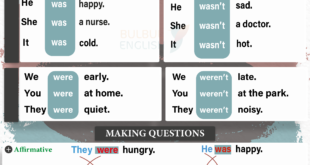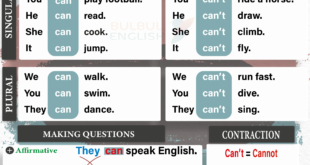CLASSROOM ENGLISH PHRASES
Classroom_English_phrasesجمل_اللغهCLASSROOM ENGLISH PHRASES
CLASSROOM ENGLISH PHRASES
CLASSROOM ENGLISH PHRASES
1. Good morning
Hello, everyone.
Hello there, John.
Good afternoon, everybody.
Good morning, everybody.
2. How are you?
How are you today?
How are you getting on?
How’s life?
How are things with you?
Are you feeling better today, David?
3. Introductions
My name is Mr/Mrs/Ms Kim. I’m your new English teacher.
I’ll be teaching you English this year.
I’ve got five lessons with you each week.
4. Put your things away
Close your books.
Put your books away.
Pack your things away.
5. Register
Who is absent today?
Who isn’t here today?
What’s the matter with Jim today?
What’s wrong with Jim today?
Why were you absent last Friday?
For how long have you been ill
Jenny?
6. Late
Where have you been?
We started ten minutes ago. What have you been doing?
Did you miss your bus?
Did you oversleep?
Don’t let it happen again.
7. Time to begin
Let’s begin our lesson now.
Is everybody ready to start?
I hope you are all ready for your English lesson.
I think we can start now.
Now we can get down to work.
8. Waiting to start
I’m waiting for you to be quiet.
We won’t start until everyone is quiet.
Stop talking and be quiet.
Settle down now so we can start.
Classroom Language: Simple instructions
1. Here are some common instructions which the class can easily understand:
Come in.
Go out.
Stand up.
Sit down.
Come to the front of the class.
Stand by your desks.
Put your hands up.
Put your hands down.
Hold your books/pens up.
Show me your pencil.
2. A number of instructions can be used at the beginning of a session:
Pay attention, everybody.
You need pencils/rulers.
We’ll learn how to …
Are you ready?
Open your books at page…
Turn to page …
Look at activity five.
Listen to this tape.
Repeat after me.
Again, please.
Everybody …
You have five minutes to do this.
Who’s next?
Like this, not like that.
3. A number of instructions can be used at the end of a session:
It’s time to finish.
Have you finished?
Let’s stop now.
Stop now.
Let’s check the answers.
Any questions?
Collect your work please.
Pack up your books.
Are your desks tidy?
Don’t forget to bring your … tomorrow.
4. Instructions can also be sequenced:
First
Next
After that
Then
Finally
5. Comprehension language:
Are you ready?
Are you with me?
Are you OK?
OK so far?
Do you get it?
Do you understand?
Do you follow me?
What did you say?
One more time, please.
Say it again, please.
I don’t understand.
I don’t get it.
Like this?
Is this OK?
B. The end of the lesson
. Time to stop.1
It’s almost time to stop
I’m afraid it’s time to stop
We’ll have to stop here
There’s the bell. It’s time to
stop
That’s it for today. You can go
now.
2. Wait a minute
Hang on a moment
Just hold on a moment
Stay where you are for a
moment
Just a moment, please
One more thing before…..
Let’s close with prayers.
Back to your places
3. Homework
This is your homework for
tonight
Do exercise 10 on page 23 for
your homework
Prepare the next chapter for
Monday
There is no homework tonight
Remember your homework
Take a worksheet as you leave
4. Leaving the room
Get into a queue
Form a queue and wait for the
bell
All of you, get outside now!
Hurry up and get outside
Try not to make any noise as
you leave
5. Next time
We’ll do the rest of this chapter
next time
We’ll finish this exercise next
lesson
We’ve run out of time, so we’ll
continue next lesson
We’ll continue this chapter next
Monday
6. Goodbye
Goodbye, everyone
See you again next Wednesday
See you later friends
See you tomorrow afternoon
Have a good holiday
Enjoy your vacation
See you in room 7 after the
break
7. Not time to stop
The bell hasn’t gone yet
There are still two minutes to
go
We still have a couple of
minutes left
We seem to have finished early
The lesson does not finish till
five past
Your watch must be fast
We have an extra five minutes
Sit quietly till the bell goes
Classroom Management
1. Common situations in which
spontaneous English can be used.
Make groups of four
Move your desks into groups
of four people
Turn your desks around
Make a circle with your desks
Make a line of desks facing
each other
Make groups of four desks
facing each other
Sit back to back
Work together with your friend
Find a partner
Work in pairs / threes / fours /
fives
Work in groups of three / four /
five
I want you to form groups
Form groups of three
Here are some tasks for you to
work on in groups of four
Everybody work individually
Work by yourselves
Work on your own
Ask your neighbour for help
 بلبل English لتعليم اللغة الإنجليزية
بلبل English لتعليم اللغة الإنجليزية




